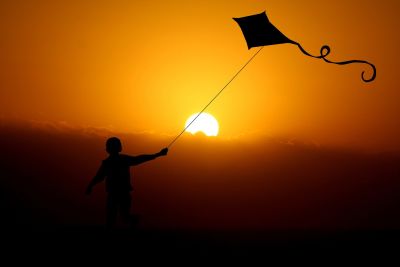“The freedom of a kite depends on not being as free as it thinks it is.” Simon Napier-Bell.
Until I read this quote, I had never thought about how the kite is actually captive. I used to believe that it was so free as it gracefully soared in the sky and would sigh with envy. But it turns out that’s not the whole truth. A kite needs support to fly, the power to withstand difficulties, and a strong connection to keep it in the air.
The important factors are the string holding it, the assistant helping it take flight, and the strength of the wind. To be able to easily withstand the wind, the distance between the person holding the string and the assistant should be at least 20–25 meters. The secret lies in the person holding the string patiently waiting, not running, and swiftly securing the kite to the string by constantly changing hands. Even if the wind is weak, when the string is pulled and stretched with force, the kite rises toward its freedom.
The more the string is pulled, the higher the kite rises. But if it slips from the hand, it becomes aimless, unable to resist the wind, and gets blown away.
Then, I started to think about what it takes for me to be free. It dawned on me that I was mistaken to believe that cutting off my ties would make me independent. True freedom lies in being in harmony with the wind through the strength of the values I am attached to.




